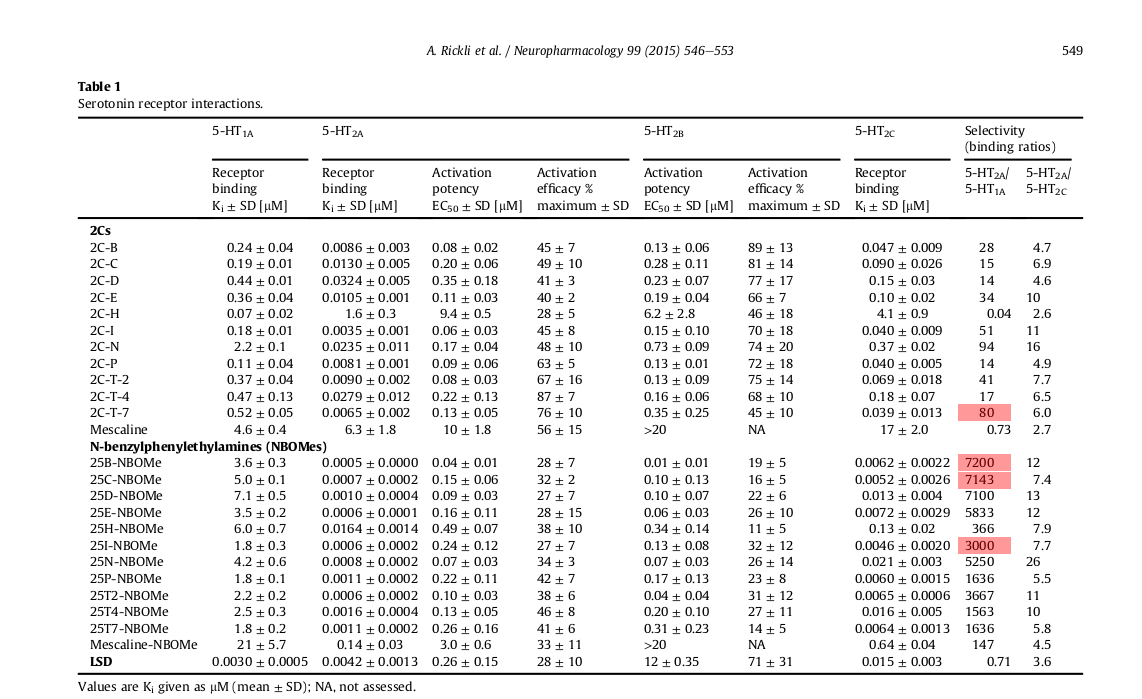Kl519
Bluelight Crew
- Joined
- Jul 17, 2014
- Messages
- 2,150
Steamboat: You completely missed the point. But I'm actually not surprised.
As I've already said, I'll do more of an in depth argument and use respectable sources when I have the time to do thorough research, as well as create an outline on how DOXs can be used safely. You only hear what you want to hear and it's annoying having to repeat myself.
Some of the doses are unknown, others or not. The fact that it isn't known, as you claim, means that they are either overdoses or not. It can go either way, so that means it can't be used to "back up" whether they caused deaths at normal doses or not, and I'll retract my claim. In turn, you also wouldn't be able to say they caused deaths at normal dosage levels, just that they caused deaths at all (of which there are thousands of substances that did the same).
Of course you wouldn't be able to find that specific information just using Google. Do you think you're the only one who scoured the regular internet looking for information on DOPr? Google does not have all of the world's information, not even close. They only have what people choose to put up. My point was to share what I learned specifically because it was new. If DOPr was considered dangerous and had negative things to say, I would've posted that too, just like how I didn't leave out any negative experiences with my high dose for safety reasons, even though I blew it out of proportion.
You on the other hand, did not acknowledge how DOx substances can be used safely, even though they can. That speaks volumes about your bias, and especially with how you backed your claims with that faulty Ricuarte study that one time, I simply don't feel the need to heed your warnings. All signs point to you not understanding that it is possible to use DOx substances safely.
And I thought I expressed this to you before, to not post to me and that in turn I would not post towards you. I actually know you in person and refrained from saying many things even though I felt like it at times. Basically, you have no idea how nice I've been towards you considering how backhanded you've been speaking towards me since the beginning. Just realize that your enemy actually has empathy towards you, even if you don't.
As I've already said, I'll do more of an in depth argument and use respectable sources when I have the time to do thorough research, as well as create an outline on how DOXs can be used safely. You only hear what you want to hear and it's annoying having to repeat myself.
Some of the doses are unknown, others or not. The fact that it isn't known, as you claim, means that they are either overdoses or not. It can go either way, so that means it can't be used to "back up" whether they caused deaths at normal doses or not, and I'll retract my claim. In turn, you also wouldn't be able to say they caused deaths at normal dosage levels, just that they caused deaths at all (of which there are thousands of substances that did the same).
Of course you wouldn't be able to find that specific information just using Google. Do you think you're the only one who scoured the regular internet looking for information on DOPr? Google does not have all of the world's information, not even close. They only have what people choose to put up. My point was to share what I learned specifically because it was new. If DOPr was considered dangerous and had negative things to say, I would've posted that too, just like how I didn't leave out any negative experiences with my high dose for safety reasons, even though I blew it out of proportion.
You on the other hand, did not acknowledge how DOx substances can be used safely, even though they can. That speaks volumes about your bias, and especially with how you backed your claims with that faulty Ricuarte study that one time, I simply don't feel the need to heed your warnings. All signs point to you not understanding that it is possible to use DOx substances safely.
And I thought I expressed this to you before, to not post to me and that in turn I would not post towards you. I actually know you in person and refrained from saying many things even though I felt like it at times. Basically, you have no idea how nice I've been towards you considering how backhanded you've been speaking towards me since the beginning. Just realize that your enemy actually has empathy towards you, even if you don't.














